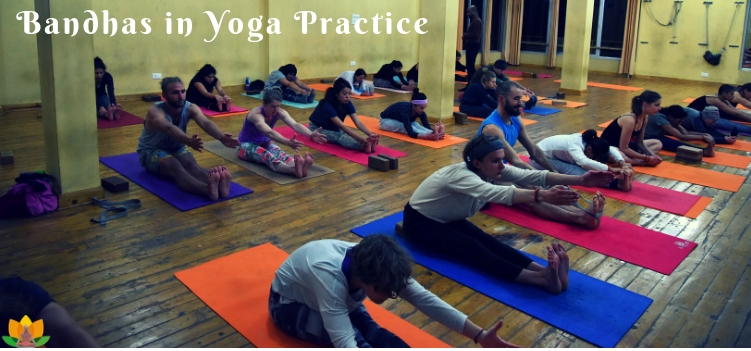BANDHAS IN YOGA PRACTICE
Our daily existence wastes all-powerful, natural, instinctive energy and soul from our bodies. Yoga Bandhas guide this stream of energy to the deprived regions from the regions where prana is blocked up or held back. Bandhas take the energy towards its focal point, where it is reallocated in a balanced manner to ensure unification and synchronization in the body. The Bandhas practice involves physical and muscular movement primarily; with time, a learner will be able to recognize underlying mental and energetic models and work on the Bandhas with a conscious effort; once experienced, these internal energy gates will remain active, all the time, in vigilance and sleep. Learners approach Bandhas about specific body parts, such as glands, muscles, and organs. At the same time, their true worth lies in being admired as the design for distributing essential power within the body. Once this energy channel is organized, it brings into line and stimulates the body’s corporeal, mental, emotional, and spiritual elements.

Bandhas types
Typically, three types of Bandhas, tri-Bandhas, are practised together. They are:
- Mula Bandha
- Uddiyana Bandha
- Jalandhara Bandha
Bandhas Steps
Steps of Mula Bandha:
- Sit straight on the carpet in Siddhasana, pressing well the perineum with the left heel.
- Keep your back straight, your neck erect, and your head pointing forward.
- Take a deep breath.
- Now, breathe out slowly. As you breathe out, first tighten the muscles around your anus and then your pelvic floor muscle and your sphincter muscles.
- Intensify the contraction as you exhale completely.
- Now, bend gently and move your head and neck to the chest.
- Hold this posture for a few seconds and then release as you inhale.
Steps of Uddiyana Bandha:
- Stand with feet hip distance apart and rest hands on knees.
- Exhale completely with force. Observe that you do this by pressing in with both your abdomen and chest.
- Hold your breathing, and do not let any air into your lungs.
- Breathe in through the nose and breathe out forcefully. Stiffen abs to push air out of the lungs.
- Concentrate on a hollowed stomach and feel the abdominal lift.
- Put lower chin to the chest.
- Hold up to 5-15 seconds. Release abdominals, lift the chin and breathe usually.
- Perform at least two more rounds. Take rest after the end of each round.
Steps of Jalandhar Bandha:
- Sit in a relaxed yoga sitting pose, sukahasna.
- Put the palms on the knees and ensure that the knees are touching the floor.
- Close your eyes and calm down your body. Breathe normally.
- Now, breathe in slowly and deeply, and then hold your breath.
- Raise your chin without leaning the head as far as possible.
- Now, bend slowly and push your neck and head to the chest.
- At this moment, contract your neck and throat muscles simultaneously.
- Lower the chin and place it on the jugular notch.
- Keep your chin down.
- Contract the neck and throat muscles and keep your back unbent.
- Try to look at the tip of your nose.
- Be in this position for a moment.
- Lift your chin and neck to revert to the starting position.
Importance of Bandhas in Yoga
Bandhas benefit the brain centres, the Chakras, and the nadis. They purify the power channels, release blockages, and improve energy exchange. Bandhas lessen mental restlessness and stress and bring about inner peace and balance.
Communally, yoga bandhas stimulate perception and intellect and stop the mind’s meaningless wandering. These internal energy gates streamline the flow of vitality or life force from dispelling outwards and direct it within the body, allowing a man to attain awareness about self, life, reality, and supreme consciousness.
